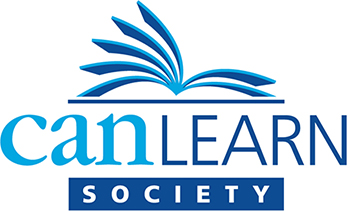by Laura Godfrey, AAC – ADHD Coach.
One per minute with their parents. Two per minute with their teachers or peers in school. 0.7 per minute with their peers outside of school. What am I talking about? Read on…
In a study by William E. Pelham, Jr. and Gregory A. Fabiano in 2008, they estimated that a typical ADHD child has nearly half a million negative social interactions each year.
For children impacted by ADHD, there is nothing that they would like more than to have others, and especially their family, accept them just as they are. Sadly, these children often try to present a more positive view of themselves that is not always realistic in an effort to be liked at home and at school. They fear admitting that they are not as good as they believe they ought to be.
Studies have indicated that it takes at least four positive statements to offset the effects of one negative statement to a child. Think about that in relation to the number of negative statements that a child with ADHD receives every day.
So why do we remember all the negative things in glorious detail done to us or said to us? Why do we remember the critical remarks more than the positives ones? There is a reason. You can blame it on the brain.
Studies conducted by Dr. John Cacioppo of the University of Chicago show what he calls, “the negativity bias” of the brain. Negative remarks do have a much greater impact on our brain. The brain is more sensitive and responds more to unpleasant news and remarks. That is why personal insults or criticism hit us harder and stay with us longer. Our brain has a built-in partiality toward negative information.
When you tell your child, “Thanks for unloading the dishwasher for me” and five minutes later you whisper, “You forgot to take out the trash—again,” do you know what happened? Your whisper sounds like a shout. In his brain, that negative comment drowned out the positive one. It’s like the positive remark was never heard.
Our brain needs a higher number of positive entries than negative ones in order to counterbalance the built‑in negativity bias. Several small, frequent, positive acts or comments work more effectively than one giant-size positive. The size of the positive is not what counts; it’s the quantity. This is strictly a numbers game!
So, what can you do? All children, regardless of whether they have ADHD, enjoy receiving attention from others. Providing lots of positive attention for appropriate behaviour is a powerful way for parents to reinforce appropriate behaviour. It will also let your child know what kind of behaviour you are expecting from them. Praising children when they exhibit appropriate behaviour is also an important way to help children feel good about themselves.
To make the positive attention more powerful, try using the following strategies:
- Make your positive attention specific. Tell your child exactly what she has done that you liked. For example, “Thank you for picking your toys up right away. I really like it when you do what I ask.”
- Give positive attention right away or right after it has happened. If you give them attention in this manner, the behaviour is more likely to occur in the future.
- Be on the lookout for good behaviour. As parents, we rarely miss an opportunity to scold our children for inappropriate behaviour. How many times do we miss the opportunity to let them know what they are doing appropriately? Observe your children more closely and you will find numerous opportunities to reinforce the good behaviours displayed.
- Use CanLearn’s iFeed method to reinforce appropriate behaviour.
i – Immediately – tell them right away!
F – Frequently – remember, it’s a numbers game!
E – Eye Contact – make sure you have their attention!
E – Enthusiastically – praise, and remember to be sincere!
D – Describe – tell them exactly what and why!
Don’t forget to affirm them! A positive affirmation can make a big difference. Here are some examples to get you started:
- You can do this. Sometimes your child just needs to hear this from someone who cares about him.
- Who you are matters. Tell your children that you appreciate them. Tell them that they are loved, that they are valued, and that they matter.
- It’s not your fault. Let your children know that while they cannot control what others do, they can choose how they respond.
- You are amazing. Your child needs to know that they are capable of doing amazing things. Sometimes they just need to be told and then reminded.
- You are good at solving problems. We know that what you pay attention to grows. Words are energy and they can build up or tear down. Make your words count.
“It’s not our job to toughen our children up to face a cruel and heartless world. It’s our job to raise children who will make the world a little less cruel and heartless” L. R. Koast.
Pelham, W. E., Jr., & Fabiano, G. A. (2008). Evidence-Based Psychosocial Treatments for Attention-Deficit=Hyperactivity Disorder. Journal of Clinical Child & Adolescent Psychology,37(1), 184-214.
Laura Godfrey has worked in various roles with the CanLearn Society (formerly Calgary Learning Centre) since 2007. She is currently working with the clinical team as an ADHD Coach and providing Strategy sessions for individuals with learning and attention difficulties. She believes in the benefits of looking at and understanding an individuals strengths and how this process can empower individuals and families to take control of their lives.
